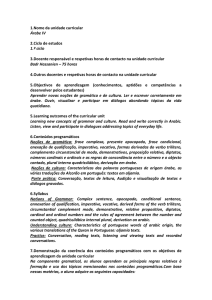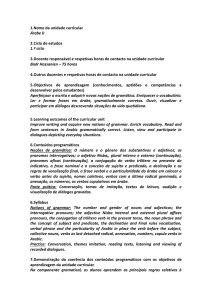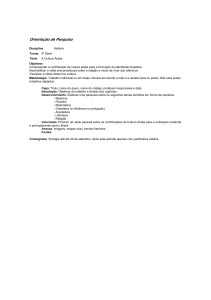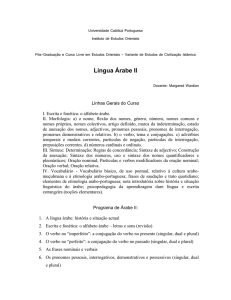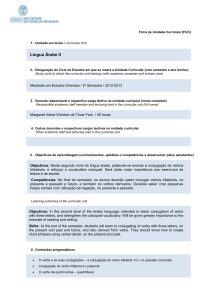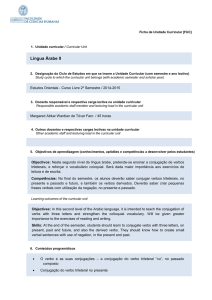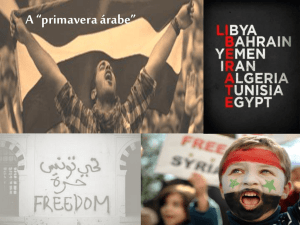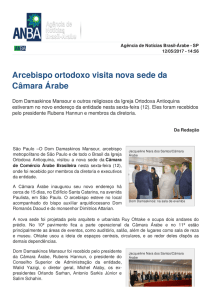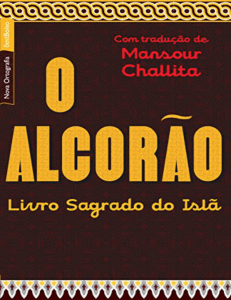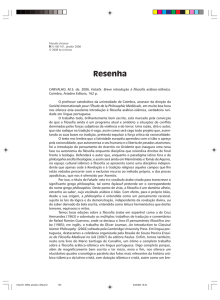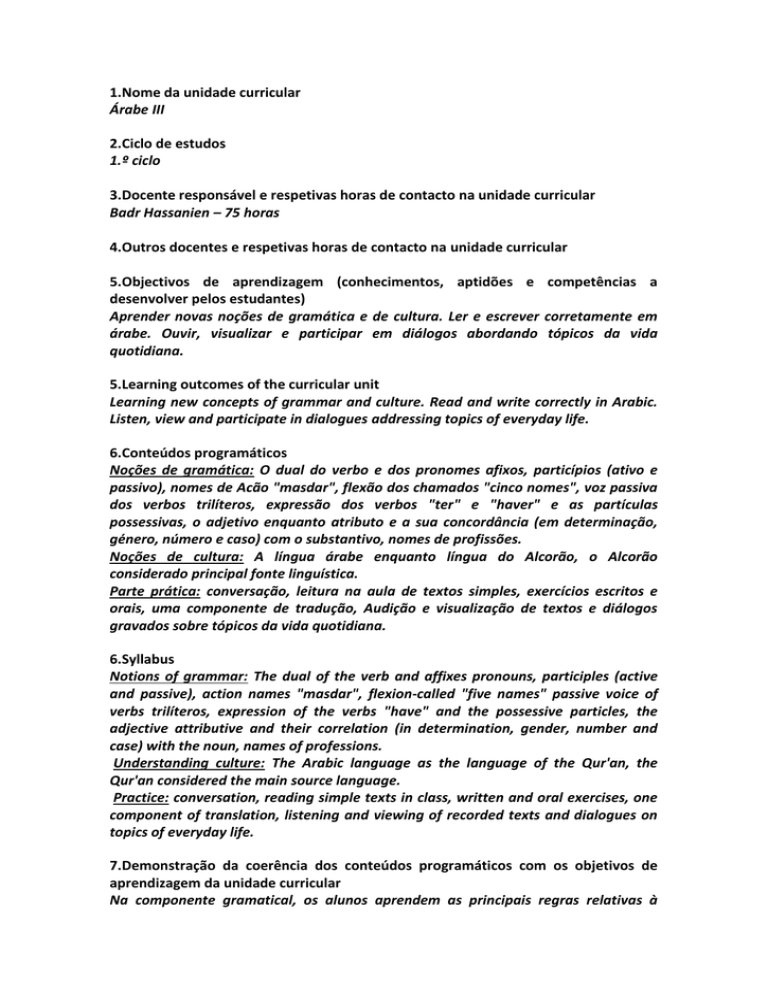
1.Nome da unidade curricular
Árabe III
2.Ciclo de estudos
1.º ciclo
3.Docente responsável e respetivas horas de contacto na unidade curricular
Badr Hassanien – 75 horas
4.Outros docentes e respetivas horas de contacto na unidade curricular
5.Objectivos de aprendizagem (conhecimentos, aptidões e competências a
desenvolver pelos estudantes)
Aprender novas noções de gramática e de cultura. Ler e escrever corretamente em
árabe. Ouvir, visualizar e participar em diálogos abordando tópicos da vida
quotidiana.
5.Learning outcomes of the curricular unit
Learning new concepts of grammar and culture. Read and write correctly in Arabic.
Listen, view and participate in dialogues addressing topics of everyday life.
6.Conteúdos programáticos
Noções de gramática: O dual do verbo e dos pronomes afixos, particípios (ativo e
passivo), nomes de Acão "masdar", flexão dos chamados "cinco nomes", voz passiva
dos verbos trilíteros, expressão dos verbos "ter" e "haver" e as partículas
possessivas, o adjetivo enquanto atributo e a sua concordância (em determinação,
género, número e caso) com o substantivo, nomes de profissões.
Noções de cultura: A língua árabe enquanto língua do Alcorão, o Alcorão
considerado principal fonte linguística.
Parte prática: conversação, leitura na aula de textos simples, exercícios escritos e
orais, uma componente de tradução, Audição e visualização de textos e diálogos
gravados sobre tópicos da vida quotidiana.
6.Syllabus
Notions of grammar: The dual of the verb and affixes pronouns, participles (active
and passive), action names "masdar", flexion-called "five names" passive voice of
verbs trilíteros, expression of the verbs "have" and the possessive particles, the
adjective attributive and their correlation (in determination, gender, number and
case) with the noun, names of professions.
Understanding culture: The Arabic language as the language of the Qur'an, the
Qur'an considered the main source language.
Practice: conversation, reading simple texts in class, written and oral exercises, one
component of translation, listening and viewing of recorded texts and dialogues on
topics of everyday life.
7.Demonstração da coerência dos conteúdos programáticos com os objetivos de
aprendizagem da unidade curricular
Na componente gramatical, os alunos aprendem as principais regras relativas à
formação e uso dos tópicos mencionados nos conteúdos programáticos.Com base
nessas matérias, o aluno adquire as seguintes capacidades:
Ter a capacidade de falar sobre si mesmo, sua vida e o seu universo; iniciar e
manter conversas sobre temas da vida diária.
Ter a capacidade de ler textos simples e autênticos sobre temas familiares e
compreender as ideias principais, sem o uso do dicionário confiando na sua
capacidade de adivinhar o significado de novas palavras pelo contexto e
outras pistas.
Ter a capacidade de compreender e produzir com precisão a estrutura básica
do árabe.
Familiar-se com as diferenças de sons e estruturas básicas entre o árabe
formal e falado.
A compreensão geral de aspetos da cultura árabe ligados à vida quotidiana,
incluindo expressões culturalmente importantes comummente usadas entre
amigos e conhecidos.
7.Demonstration of the syllabus coherence with the curricular unit's objectives
On the grammatical part, students learn the main rules about the formation and use
of the mentioned topics on the programmatic contents. Based on these subjects, the
student acquires the following skills:
The ability to speak about himself, his life and environment, to initiate and
sustain conversations on daily life topics.
The ability to read simple, authentic texts on familiar topics and understand
the main ideas without using the dictionary and with confidence in your
ability to guess the meaning of new words from context and other clues.
The ability to comprehend and produce accurately the basic structure of
Arabic.
Familiarity with the differences in sounds and basic structures between formal
and spoken Arabic.
A general understanding of aspects of Arab culture connected to everyday
life, including culturally important expressions commonly used among friends
and acquaintances.
8.Metodologias de ensino (avaliação incluída)
O método explicativo é usado na introdução à língua árabe, nas noções gramaticais
e dos textos. O método participativo é usado nos diálogos da conversa, na audição e
visualização dos suportes multimédia e na tradução dos textos árabes para
portuguesa e vice-versa. A avaliação dos alunos baseia-se em 4 elementos:
Dois testes escritos (60%),
Um teste oral no fim do semestre (20%),
Colaboração nas aulas, trabalhos de casa e portfolio (20%)
8.Teaching methodologies (including evaluation)
The explanatory method is used in the introduction to the Arabic language, the
grammatical concepts and texts. The participatory method is used in the dialogues of
the conversation, the listening and viewing of multimedia and the translation of
arabic texts into portuguese and vice versa.
The student evaluation is based on four elements:
Two written tests (60%)
An oral test at the end of the semester (20%)
Collaboration on classes, homework and portfolio (20%)
9.Demonstração da coerência das metodologias de ensino com os objetivos de
aprendizagem da unidade curricular
As metodologias de ensino aplicadas permitem aos alunos ter competências
suficientes para compreender mais ou menos textos árabes e redigir composições em
árabe. Este domínio das matérias ensinadas reflecte-se nos resultados da avaliação
dos testes.
9.Demonstration of the coherence between the teaching methodologies and the
learning outcomes
The teaching methodologies applied allow students to have sufficient competences
to understand themselves arabic texts, to write compositions and to express some
arabic phrases. The understanding of the construction given is reflected in the
evaluation of the tests.
10.Bibliografia
Kristen Brustad, Mahmoud Al-Batal and Abbas Al-Tonsi, Al-Kitaab Fii Ta
Callum Al-cArabiyya: Part One, 3rd Edition, (2011).
António Dias Farinha, Curso de Árabe, Instituto de Estudos Árabes e Islâmicos,
Universidade de Lisboa, Faculdade de Letras, Lisboa, 2001.
Badr Hassanien, " O Particípio Passado em Português e Exame Contrastivo
com o Árabe", dissertação de mestrado, FLUL, Lisboa 1997.
Mohammad T. Alhawary, Modern Standard Arabic Grammar, WileyBlackwell, 2011.

